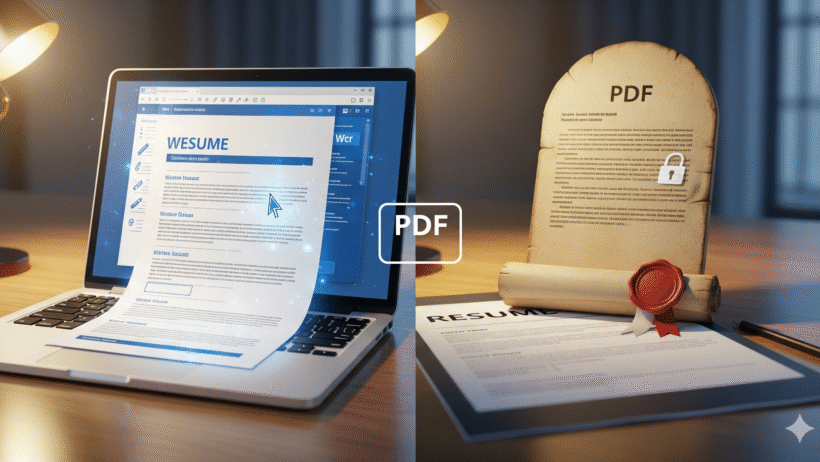When it comes to submitting your resume, the seemingly simple choice between a PDF and a Word document can be a source of confusion. There’s a common misconception that Word documents are better for Applicant Tracking Systems (ATS), but modern technology has made this advice largely outdated. Here’s a breakdown of why a PDF is now the superior choice, and when a Word doc might still be necessary.
The Evolution of Applicant Tracking Systems
In the early days of ATS—the software that scans and organizes resumes for recruiters—many systems struggled to parse complex PDFs. They were often better at reading the standard text from a Word document. This is where the old advice to always use a .docx file originated.
However, the technology has advanced significantly. The vast majority of today’s ATS platforms are highly sophisticated and can read text-based PDFs just as easily as Word documents. As long as your PDF was created by saving a document as a PDF (and not by scanning a paper copy), the system will have no trouble extracting the information.
The Case for the PDF
So, if both formats are readable by ATS, why is PDF the preferred choice? It all comes down to formatting integrity and professionalism.
- Preserves Your Design: A PDF is a static document. The layout, fonts, spacing, and design you carefully crafted will look exactly the same on any computer or device. With a Word document, there’s always a risk that a different version of the software or different installed fonts will completely scramble your resume’s appearance, making it look unprofessional and difficult for a human to read.
- Looks Polished: A PDF feels like a finalized, official document. It protects your resume from accidental edits and gives the impression of a polished, well-prepared candidate.
The Importance of a Simple Layout
No matter which format you choose, the most critical factor for ATS success is a clean and simple resume layout. Avoid complicated formatting like multiple columns, text boxes, or embedded images. While these design elements might look visually appealing to you, they can easily confuse an ATS, causing it to misread or skip key information. Stick to a standard, single-column format with clear headings. This ensures that both the automated system and the human recruiter who eventually sees your resume can easily find and understand your qualifications.
When a Word Doc is Still the Right Call
While PDF is the best default option, there are two key exceptions where you should use a Word document:
- When the job posting explicitly asks for it. Always follow the specific instructions in the job description. If they request a .docx file, send them a .docx file.
- When working with a recruiter. External recruiters often need to make quick edits to your resume, such as removing personal contact information or adding their own company branding before submitting it to a client. A Word document makes this process simple for them.
The Bottom Line
For most job applications, a clean, text-based PDF is the safest and most professional choice. It ensures your resume’s formatting remains perfect for the human eye, while still being fully scannable by modern ATS. The real secret to ATS success, regardless of file type, is a clean, simple layout with standard fonts and relevant keywords. Draft your resume in a Word document for easy editing, and then save the final version as a PDF for submission. This simple practice will set you up for success in the modern job market.







